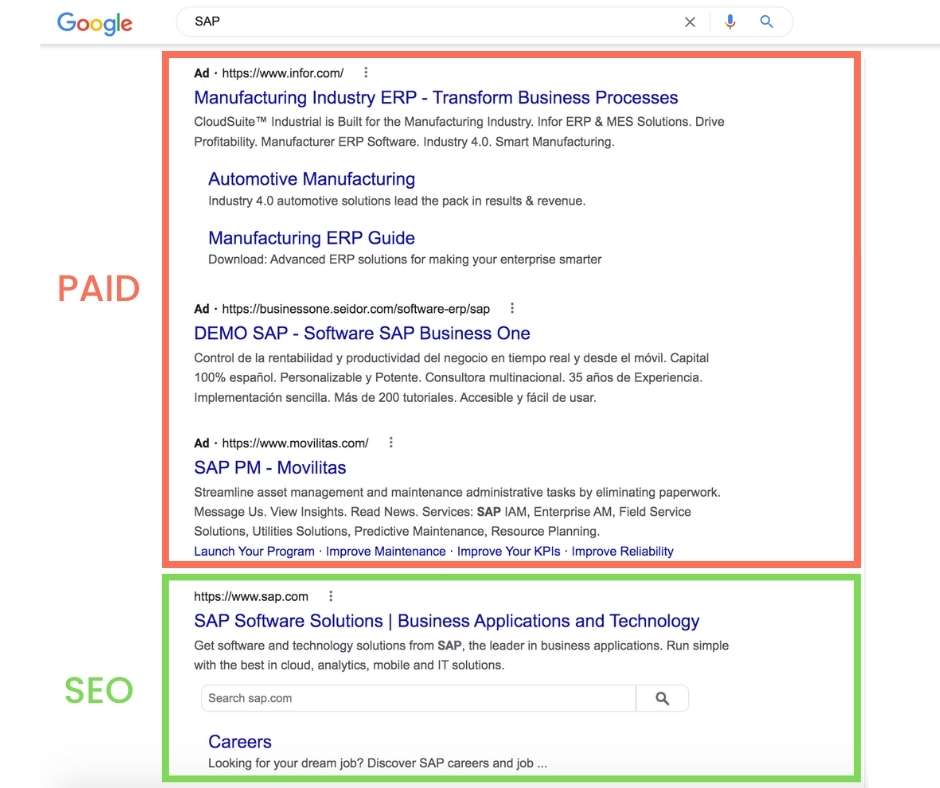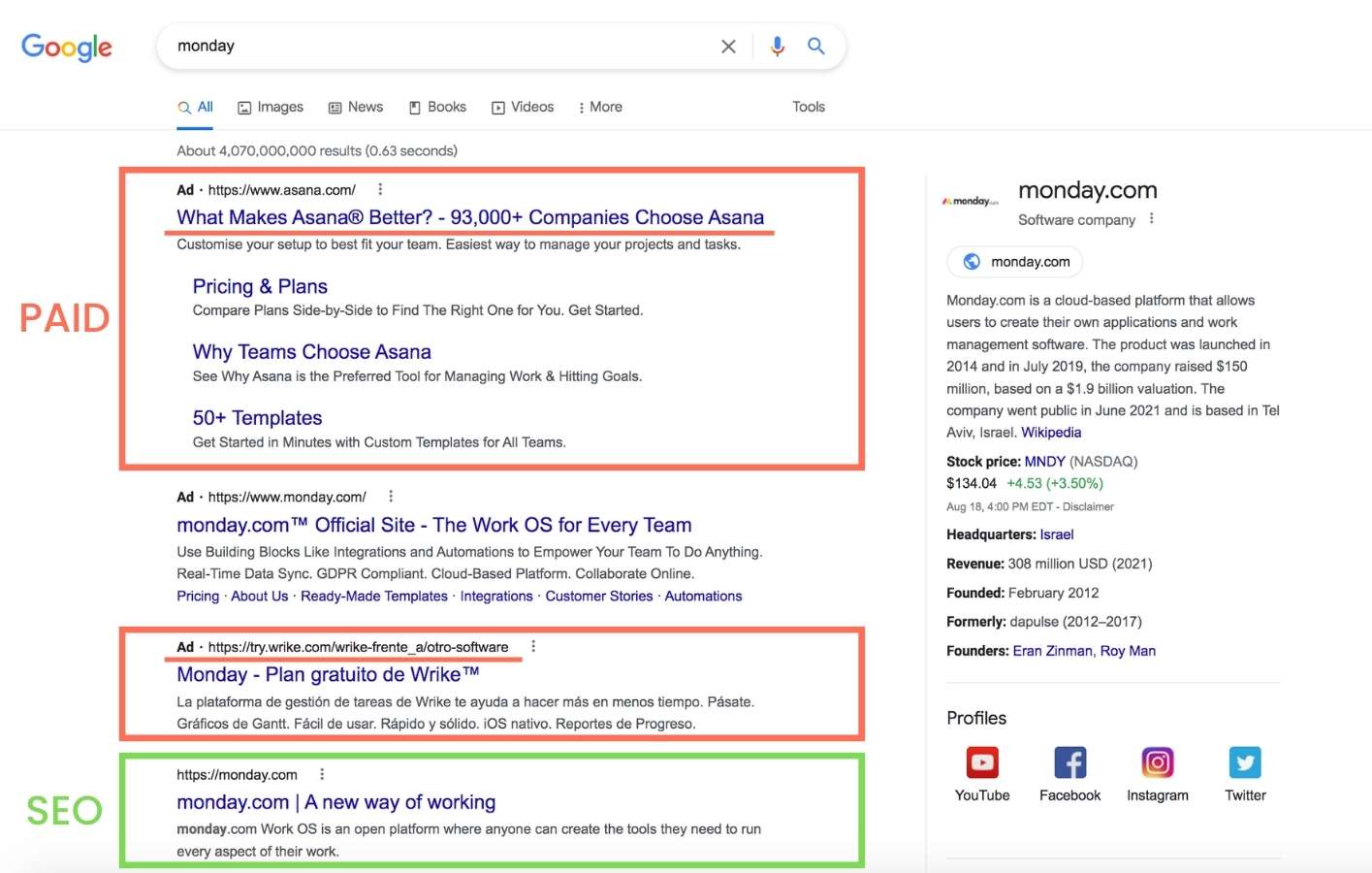In this competitive environment, it’s crucial for any business to develop a solid marketing plan. Branding helps promote your brand and bring awareness to your company’s identity, but you can use other methods to enhance your strategy such as SEO and PPC campaigns. Let’s talk about branded keywords.
The key to spending as little as possible on boosting awareness, engagement and interaction with your brand is understanding how branding, SEO and PPC relate to each other.
As you probably know, branded keywords are the basis of search strategies. However, investing in them can be expensive, increasing your budget in unexpected ways. Investing carefully is essential.
Learning how to measure branded keywords
In an ideal world, we would all spend zero money on branded keywords. But this is nearly impossible in a highly competitive market. Spending less is possible by measuring the loyalty of your consumers.
The importance of loyalty
Loyalty refers to the ongoing connection between your brand, your customers and their willingness to buy your products, consume your content and interact with you in general. These customers trust your company and are not as easily influenced as other consumers by negative factors such as rival brands, price increases or possible flaws.
For example, check out this example of SAP, a German software company. If they have focused their efforts on building a loyal community of customers, competitor ads will not affect SAP consumers, who will go directly to their website.

Customer loyalty has a lot of benefits. It can impact sales and revenue in a positive way, it increases engagement and retention, it gives you access to first-party information from your customers, and it can be easy to measure via different metrics.
Measuring loyalty is possible nowadays thanks to marketing technology. For instance, you can use different metrics available from all-in-one marketing analytics platforms, or combine different tech solutions specialized in customer loyalty, SEO and PPC.
SEO and PPC
These marketing specialties are more connected to each other than you may think. SEO and PPC strategies must coordinate their activities, share their data and, essentially, feed from each other in order to not increase budgets on paid campaigns and not create unnecessary work.
This coordination between SEO and PPC is also a good way to learn about your industry and your competitors. You can find out who’s bidding on your own branded keywords and how much money they’re investing against you, as we see in the image below.

In the project management industry, for instance, not only are companies like Asana and Wrike bidding against their competitor, cloud-based platform Monday, but their strategy is quite aggressive. They are taking advantage of their PPC strategy and their given position at the top of the results to persuade the user to choose their platform over Monday, using the title of the ad as well as in the URL to their site.
Should I invest more in branded keywords?
Customer loyalty plays a big part in measuring your branded keywords and can determine KPIs for your SEO and PPC strategy.
There are two main situations you may find yourself in when using this strategy:

- Your loyalty rate is high. On one hand, loyal customers will search for your brand directly and won’t look at ads. That’s why, if your loyalty rate is high or stable, you can focus on your SEO strategy and lower the budget of the branded keywords on PPC campaigns. After all, these customers are already looking for you and they are up to date with your brand. Instead, you should focus on maintaining these users.
- Your loyalty rate is low. On the other hand, if your loyalty rate has a decreasing pattern, it’s time to invest in your branded keywords and focus on your PPC strategy. If not, you won’t have the benefits of a loyal audience and you won’t be able to protect your brand from your competitors. It’s a lose-lose situation but it’s also easily reversible.
This way of measuring your loyalty is not only a simple method of determining how much you need to invest on branded keywords, but it can also help you save a lot of budget that you can invest in other areas.
Coordination is key
What’s certain is that you need a well coordinated strategy between branding, PPC and SEO activities. Sometimes, the results of your PPC campaigns and your SEO are reviewed by two different teams or even different agencies, and this can be detrimental to your strategy. That’s why realizing that both PPC and SEO audiences share the same user experience is the first step in the right direction.
The next step, of course, is finding a tool that brings the analysis of these activities together, can measure your loyalty rate and can process all the data in a dynamic way. A multi-channel-focused and experienced partner like Bucksense can definitely be the right choice for you to achieve digital success.
Do you want to learn more about how to use your branded keywords? Let us know here!
How is customer loyalty related to search strategies?
Loyalty can be a determining KPI when deciding whether or not to bid on branded keywords. It affects the way your customers search for your brand, so depending on whether you have a high or low loyalty rate, you will need to invest (or not) in PPC and SEO strategies.
How much should I bid on my branded keywords?
It depends on the level of customer loyalty you have. If your loyalty rate is low, we suggest investing more budget in branded keywords, while if your loyalty is high or stable, it’s okay to lower the investment since customers are already searching your brand on their own.










